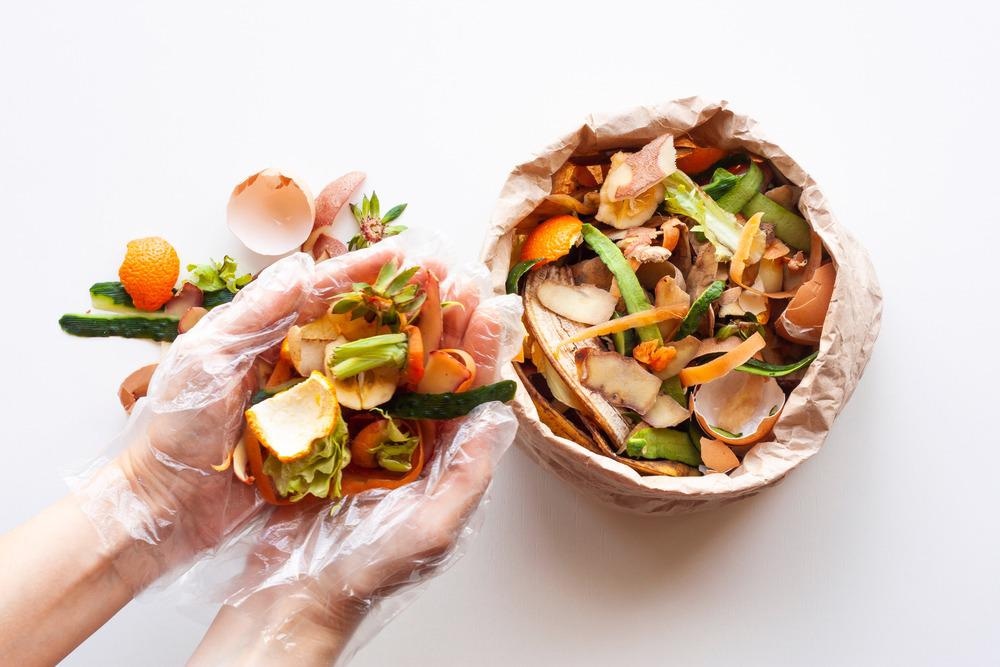In the last two decades, nanoparticles have been applied in various industries, including energy, electronics, foods, agriculture, cosmetics, bioremediation, and many others. In a new study, researchers have synthesized silver nanoparticles via a sustainable and environmentally safe method by utilizing fruit waste. This study is available as a pre-proof in Materials Today: Proceedings.

Study: Sustainable synthesis of silver nanoparticles using fruit waste and its antibacterial activity. Image Credit: Candle photo/Shutterstock.com
Various Methods for the Synthesis of Nanoparticles
Previous studies describe hydrothermal, physical, biological, chemical, and sol-gel methods to synthesize different types of nanoparticles. These studies have highlighted some of the limitations of the available chemical and physical methods, including the high cost of production and utilization of harmful chemicals, which affect the environment and humans in the case of direct contact.
A biological process, also known as the green synthesis of nanoparticles, is an eco-friendly process that does not require harmful chemicals. In addition, this method does not require external energy, is cheap, and is faster for the large-scale development of nanoparticles.
In the green synthesis of nanoparticles, scientists use natural reducing and stabilizing (capping) agents. Interestingly, various metal nanoparticles, e.g., gold, silver, and transition metals, have been successfully developed. In this process, the extracts of a plant from the root, bark, leaf, stem, buds, flower, fruits, or latex can be used as a reducing agent to synthesize metal nanoparticles.
Typically, metal compounds are reduced via a reducing agent to produce nanoparticles. Some of the phytoconstituents of the plant extracts, such as ketones, terpenoids, phenols, flavones, quinones, and a carboxylic acid, are associated with the conversion of metal compounds to their corresponding nanoparticles. Among the phytoconstituents, researchers observed that flavones and quinones are water-soluble and exhibit maximum reducing properties.
One of the disadvantages associated with the green synthesis of nanoparticles is the difficulty in controlling the monodispersed morphology of the nanoparticles produced. This occurs because of the varied function of various bioactive compounds present in the plant extract. The concentration of specific phytoconstituents present in the plant extract has a significant effect on the production of nanoparticles.
Among various metal nanoparticles, silver nanoparticles have been applied widely in biomedical research because of their prominent antimicrobial properties, high sensitivity, and catalytic properties. Several studies have shown that silver nanoparticles can inhibit many harmful pathogens. These studies have also shown that the silver nanoparticle is highly effective against kanamycin, ampicillin, amphotericin, and amoxicilline.
Development of Silver Nanoparticles using Fruit Waste - A New Study
In this study, researchers used the extracts of fruit waste from Artocarpus heterophyllus (jackfruit) and Punica granatum (pomegranate) as reducing agents for the synthesis of silver nanoparticles at room temperature. Some of the advantages of using fruit waste extracts include easy availability, a low-cost process, and non-toxicity.
Scientists first analyzed the production of silver nanoparticles by observing the change in color of the reaction solution. Silver nanoparticles were produced within five to six hours after adding the fruit waste extract to the silver ion solution. The newly synthesized silver nanoparticles were characterized using UV–Vis spectroscopy.
Researchers reported that the maximum absorbance peak occurred between 420 and 450 nm for both types of fruit waste extracts, which is the characteristic peak for silver nanoparticles. The average size of the nanoparticles determined using Transmission Electron Microscopy (TEM) was consistent with the reports of Dynamic Light Scattering (DLS) analysis. This finding implies that the silver nanoparticles produced were well dispersed in the solution.
The current study reported that the average size of the synthesized silver nanoparticles using Punica granatum was 25 nm and Artocarpus heterophyllus was 15 nm. Interestingly, researchers observed that the silver nanoparticles remained stable in solution even after fourteen days of its synthesis. This report was further confirmed via Zeta potential analysis, which showed a robust peak at 12.8 mV and 24.4 mV for nanoparticles produced using Punica Granatum and Artocarpus heterophyllus, respectively.
The Selected Area Electron Diffraction (SAED) pattern provided structural information of the synthesized nanoparticles. In this study, scientists reported the presence of crystalline planes and, thereby, concluded that the newly synthesized silver nanoparticles contain a face-centered cubic structure.
Importantly, this study has shown that the silver nanoparticles produced using Punica Granatum and Artocarpus heterophyllus exhibited strong antibacterial activity against E-coli, a Gram-positive bacterium that causes food-borne diseases. Scientists observed that the antibacterial efficacy improved with the enhancement of the silver nanoparticle concertation.
Concluding Remarks
In this study, researchers synthesized silver nanoparticles using fruit waste extracts from Punica Granatum and Artocarpus heterophyllus. These extracts acted as both reducing and stabilizing agents. Scientists stated that this sustainable and eco-friendly method could be used for the large-scale synthesis of silver nanoparticles. Importantly, this nanoparticle could be effectively used in biomedical applications, as it showed a strong antibacterial effect.
Reference
Rajput, H. et al. (2022) Sustainable synthesis of silver nanoparticles using fruit waste and its antibacterial activity. Materials Today: Proceedings. https://www.sciencedirect.com/science/article/pii/S2214785322034605
Disclaimer: The views expressed here are those of the author expressed in their private capacity and do not necessarily represent the views of AZoM.com Limited T/A AZoNetwork the owner and operator of this website. This disclaimer forms part of the Terms and conditions of use of this website.